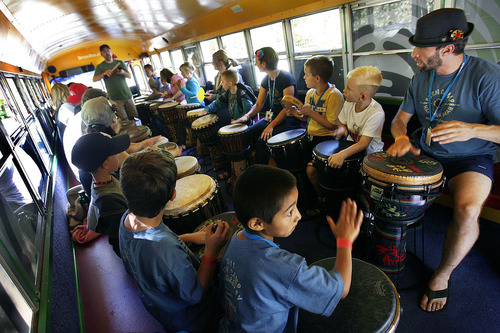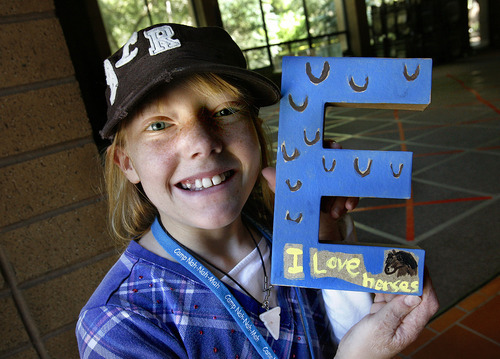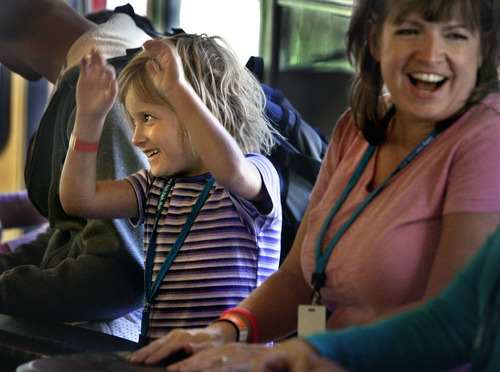This is an archived article that was published on sltrib.com in 2011, and information in the article may be outdated. It is provided only for personal research purposes and may not be reprinted.
There was a time when 10-year-old Elizabeth Watson hated the burn scars that wrapped around her legs, arms, feet and part of her head, "thinking how ugly they were."
But over time, Elizabeth learned that the scars left from a propane accident when she was only 5 months old don't define who she is or the way she looks. They are simply, as she said Sunday, "a part of who I am."
At the 12th annual University Health Care Burn Camp at Camp Tracy in Mill Creek Canyon, 42 kids have been riding horses, swimming, making music and building crafts over the last few days. But they've also been learning something more valuable — the confidence to move forward after a tragic burn injury left permanent scarring.
"Burn survivors go through a lot of different phases in their healing. It's sometimes difficult for them to feel good about the way they look after their burn injury and feel positive self-esteem," said camp co-director Brad Wiggins, who also is a clinical nurse coordinator at University Health Care Burn Center. "So the camp's purpose is to facilitate interactions with other burn survivors and teach them how to survive their burn injury."
The center runs four camps for survivors of different ages: Camp Nah Nah Mah for 6- to 12-year-olds that ends Tuesday, a one-day camp for pre-schoolers held Tuesday, a teen river-rafting expedition at Desolation and Gray canyons in June, and an adult rafting trip in southern Utah in September.
"No matter what size of injuries you have, it qualifies you for the camp," Wiggins said. "Regardless of the size of the burn, it still affects people in different ways. Anyone can come despite where they are burned."
During a bright, temperate Sunday morning, the kids waved upward as a University Hospital AirMed helicopter flew over the camp, just two miles up the mouth of the Salt Lake County canyon. Some of them then huddled around tables in the lodge to work on crafts, while others got in a bus to make music pounding on African djembe drums and shake maracas.
Asked what her favorite activity was so far, 6-year-old Chloie Workman just smiled, shrugged and said, "I think everything."
But Chloie also got to talk with others for the first time at camp about her burn injuries, caused by an accident when she pulled a rice cooker onto her head.
"I learned about other people and their burns, and I tell them how I got my burns, too," she said.
Camp Nah Nah Mah is free for the kids and fully funded by the Professional Firefighters of Utah, the union that supports more than 15 municipal departments in the state. Firefighters also volunteer at the camp by becoming counselors, doing cleanup and cooking for the children. The Greater Salt Lake Council of the Boy Scouts also donates the use of Camp Tracy.
"In the past, firefighters have kind of lost track to what happens to [burn survivors], and what this burn camp gave us is a chance to follow up and see how well they're doing," said camp co-director Ron Fife, who also is a Salt Lake City fire division chief. "It's a great opportunity that firefighters have and something they really support."
Ten-year-old Elizabeth said she would just like to go to burn camp without having the scars. Yet she says she has accepted what happened and has developed the confidence to move on.
"I used to picture my life like it was put in a book," she said. "Then I realized, without my scars I wouldn't know what my story was about."
Google+: +Vincent Horiuchi









